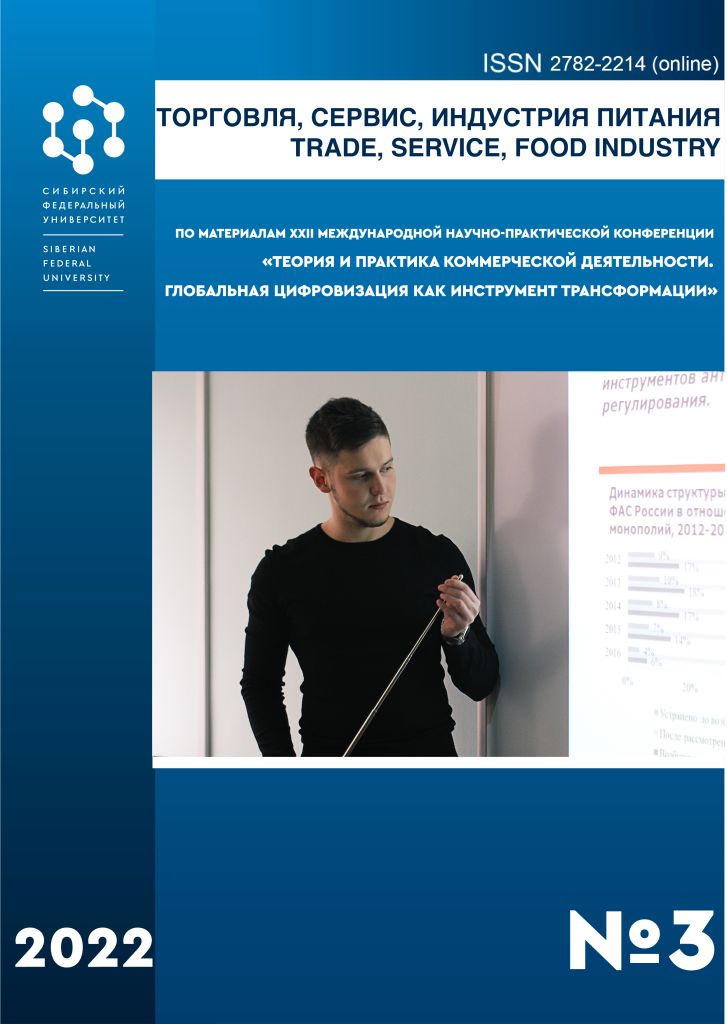The article examines the issues and trends in the development of the organic products market on the example of the Chinese market in terms of the development of innovative approaches to its production and assessment of the preferences of Chinese consumers. The analysis of materials showed that in Western countries, experts in the field have long appreciated the growing demand for organic products, while in China, organic food is just beginning to spread, becoming one of the key trends in the development of the national food market. The paper presents an analysis of factors confirming that in the absence of consideration of the preferences of Chinese consumers when choosing organic food, manufacturing companies run the risk of implementing an ineffective policy for promoting organic products, which significantly reduces its sales. The analysis of the Chinese organic food market showed that the experience of Chinese organic market operators can also be taken into account by Russian producers for a more effective competitive strategy in international markets.
consumer behavior, organic products, marketing research, demand, consumer preferences
1. Kulik, A. O., Dudnik, T. A. (2016). The concept of consumer preferences: factors affecting the consumer.In: Economics and society, 3 (22), 659-664.
2. Kaunova, N. L. Approaches to the study of consumer demand and the determination of needs for goods. URL: http://lib.ibteu.by/bitstream/handle/22092014/1370/%20%20%20%20%20%20%20%20%20.%20.pdf?sequence=3 (Date of access: 12.03.2022).
3. Markushina, A. A. (2016). Marketing research of consumer preferences // Socio-economic sciences and humanitarian research, 13, 18-34.
4. Pereverzev, V. A. (2016) The concept and main components of consumer preferences // New Science: Problems and Perspectives, 6-1 (85), 192-194.
5. Budnik, M. N., Dvalishivili, L. V. (2014). Management of retail consumer behavior. In: Business-inform, 3. URL: http://cyberleninka.ru/article/n/upravlenie-povedeniem-potrebiteley-predpriyatiy-roznichnoy-torgovli (Date of access: 24.04.2022).
6. Posypanova, O. S. (2012). Economic psychology: psychological aspects of consumer behavior. Kaluga: KGU im. K. E. Tsiolkovsky, 296 p.
7. Pechenevsky, V., Filonov, V. (2017) Methodology for forecasting the demand and consumption of food products in the region for the medium term. In: APK: economics, exercise, 3, 32-39.
8. Volovskaya, N. M., Idrisova, A. I. (2020). Consumer preferences: concept, theoretical approaches. In: Economics and business: theory and practice, 4-1. URL: https://cyberleninka.ru/article/n/predpochteniya-potrebiteley-ponyatie-teoreticheskie-podhody (Date of access 13.05.2022). DOI:https://doi.org/10.24411/2411-0450-2020-10259
9. Dvornikova, E. (2019). Overview of the Russian organic food market: [Electronic resource]: URL: http://www.foodmarket.spb.ru/current.php?article=1851 (Date of access: 13.04.2022).
10. Alekseeva, E. A. (2018). Changes in the consumer behavior of the population of the People's Republic of China in relation to food. In: Eastern Analytics, 2, 81-92.
11. Konovalov, K. L. Shulbaeva, M. T., Shternis, T. A. (2020). Natural products for a healthy diet - organic products. In: Food industry, 3, 26-27.
12. 2021-2027 China's organic food industry market demand analysis and investment development research report. URL: https://www.chyxx.com/research/202010/898778.html (Date of access: 10.05.2022).
13. Briesch, R., Chintagunta, R., Matzkin, R. (2017). Nonparametric discrete choice models with unobserved heterogeneity. In: Econom. Statist, 28 (2), 291-307.
14. Davis, P., Ribeiro R. (2019). A simple globally consistent continuous demand model for market level data. Working paper, London School of Economics and Political Science, London, 234-259.
15. Gordon, B. R. (2019). A dynamic model of consumer replacement cycles in the PC processor industry. In: Marketing Sci, 28 (5), 846-867.
16. Hartmann, W. R. (2020). Retail competition and the dynamics of demand for tied goods // Marketing Sci, 29 (2), 366-386.
17. Krasovskaya, N. V., Zamuraeva L. E., Danilova E. P. (2017). Providing residents of cities with domestic organic food: myth or reality? In: The EUrASEANs: journal on global socioeconomic dyna-mics, 5 (6), 48-54.
18. Wang, Nan, He, Jiao (2016). Research on the Mechanism of Organic Food Purchasing Behavior: A Case Study of Beijing Consumers. In. Consumer Economy, 179 (01), 75-80.
19. Wu, Yifeng, Qian, Minze (2017). An Empirical Analysis of Factors Affecting Consumer Demand. In: Economic Theory and Economic Management, 2, 32-36.
20. Xie, Yumei, Gao, Yun (2018). Analysis of Consumers’ Perception of Organic Food and Purchase Behavior. In: Journal of Jiangnan University (Humanities and Social Sciences Edition), 1, 125-129.
21. Xu, Yunhua (2016). A Study of Consumer Cognition and Willingness to Pay for Organic Food: Dissertation. - Shanghai, 134.
22. Yang, Ruifei. (2016) An Empirical Study on Consumers' Purchase Behavior of Organic Food. In: Science and Technology Plaza, 2, 136-138.
23. Zheng, Mingfu. (2018) Variety differences in consumers' willingness to pay for organic food and its influencing factors: A comparison between rice and pork belly as an example. In: Enterprise Economics, 4, 80-86.
24. Zhong, Kai. (2018) Analysis of Organic Food Consumption Behavior. In: Food Industry, 39 (10), 247-250.
25. Zhang, Minghua, Wen, Jinfeng. (2016) Consumers' ability to identify food safety issues and safe food purchase behavior. In: Nantong University Journal. Social Science Edition, 3, 43-48.
26. Lu, M. Y., Shin, J. (2018). A model of two-sided costly communication for building new product category demand. In: Marketing Science, 37 (3), 382-402.








